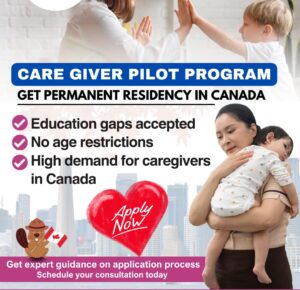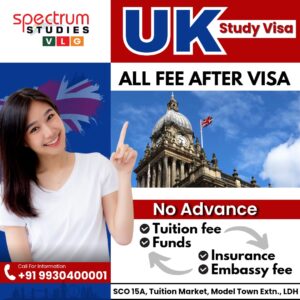Canada is one of the most popular destinations for international students and professionals seeking to upgrade their skills and build successful careers. With a world-class education system, globally recognized certifications, and flexible immigration pathways, Canada offers multiple options for individuals who want to study or enhance their skills.
Among these options, the Canada Skilled Course Visa and the Canada Short-Term Study Visa have become increasingly attractive. These visas allow students and professionals to pursue skill-based programs, short-term diplomas, or certificate courses that help them gain employability and career opportunities worldwide.
In this blog, we will cover everything you need to know about Canada Skilled Course Visa and Canada Short-Term Study Visa in 2025 – including eligibility, benefits, top courses, application process, and career pathways.
Why Choose Canada for Skilled and Short-Term Courses?
Before diving into the visa details, let’s understand why Canada is a global hub for skill-based learning:
-
Globally Recognized Credentials – Canadian certificates, diplomas, and degrees are valued internationally.
-
Affordable Short-Term Programs – Unlike long degree programs, short courses are cost-effective and skill-focused.
-
Pathway to Employment – Many short-term and skilled courses are directly linked with industry needs, improving job opportunities.
-
PR Opportunities – Some programs qualify as pathways to Permanent Residency under Canadian immigration streams.
-
Work While Studying – Eligible students can work part-time during their studies to support living expenses.
-
Safe & Multicultural Environment – Canada welcomes thousands of international students every year, making it a friendly and secure study destination.
What is a Canada Skilled Course Visa?
The Canada Skilled Course Visa is designed for international students who wish to enroll in skill-development programs, vocational courses, or certification diplomas. These programs usually range from 6 months to 2 years and focus on practical skills aligned with Canadian industry demands.
Examples of Skilled Courses in Canada:
-
Healthcare Assistance & Nursing Diplomas
-
Hospitality & Tourism Management
-
Information Technology & Computer Programming
-
Business Administration & Accounting
-
Supply Chain Management
-
Skilled Trades (Carpentry, Welding, Electrical, Automotive)
-
Early Childhood Education
-
Nanny & Caregiver Programs
These programs are ideal for individuals looking to gain specialized skills and secure employment quickly in Canada or abroad.
What is a Canada Short-Term Study Visa?
The Canada Short-Term Study Visa is meant for students who want to study for less than 6 months in Canada. This is perfect for those pursuing language training (like IELTS or French), certificate courses, workshops, or professional upgrading programs.
Key points about short-term visas:
-
No need for a study permit if your program is 6 months or less.
-
You can study on a visitor visa if the course duration is short.
-
Ideal for students who want to test Canadian education before committing to longer programs.
Eligibility for Canada Skilled Course Visa
To apply for a Canada Skilled Course Visa, you need to meet certain requirements:
-
Admission Letter – Acceptance letter from a Designated Learning Institution (DLI).
-
Proof of Funds – Bank statements or financial proof to cover tuition and living expenses.
-
Educational Background – Academic qualifications required for the chosen course.
-
Language Proficiency – IELTS/TOEFL scores (minimum 5.5 bands for most diplomas).
-
Valid Passport – Must be valid throughout your study duration.
-
Visa Application Documents – SOP, GIC (if applicable), medical examination, police clearance.
Application Process for Canada Skilled Course Visa
-
Choose Your Program & College – Select a DLI-approved course.
-
Gather Documents – Academic transcripts, language test results, financials.
-
Apply for Admission – Get the Letter of Acceptance (LOA).
-
Pay Tuition Fees – Secure your seat.
-
Apply for Study Permit – Submit application online/offline.
-
Biometrics & Medical Exam – Complete required checks.
-
Visa Approval – Get your visa and prepare for travel.
Benefits of Canada Skilled Course Visa
-
Practical, job-oriented training.
-
Opportunity to apply for Post-Graduate Work Permit (PGWP) (for eligible programs).
-
Better chances to apply for Permanent Residency (PR).
-
Affordable tuition compared to degree programs.
-
Internship and co-op options with Canadian employers.
Top Canadian Cities for Skilled & Short-Term Courses
-
Toronto & Brampton (Ontario) – Business, IT, Hospitality.
-
Vancouver (British Columbia) – Film, Media, Technology, Trades.
-
Edmonton & Calgary (Alberta) – Oil & Gas, Skilled Trades, Healthcare.
-
Montreal (Quebec) – French language, Aviation, IT.
-
Winnipeg (Manitoba) – Agriculture, Skilled Trades.
Cost of Skilled & Short-Term Courses in Canada
-
Skilled Diplomas – CAD $8,000 – $18,000 per year.
-
Short-Term Certificates – CAD $3,000 – $7,000 (depending on course).
-
Living Expenses – CAD $10,000 – $12,000 annually.
Career Opportunities After Skilled Courses in Canada
-
Healthcare & Nursing – High demand due to aging population.
-
Hospitality & Tourism – Growing sector post-COVID recovery.
-
IT & Software – Canada is a tech hub with global opportunities.
-
Trades – Skilled workers like electricians, welders, and carpenters are highly in demand.
-
Business & Accounting – Stable job prospects across industries.
Canada Skilled Course Visa vs. Short-Term Study Visa
| Feature | Skilled Course Visa | Short-Term Study Visa |
|---|---|---|
| Duration | 6 months – 2 years | Less than 6 months |
| Visa Type | Study Permit | Visitor Visa |
| Work Rights | Allowed (part-time) | Not allowed |
| PR Pathway | Possible | Limited |
| Ideal For | Career-oriented students | Quick upskilling or language courses |
Why Apply with Spectrum Studies VLG?
At Spectrum Studies VLG, we specialize in counselling and visa support for students aiming to study in Canada. Our services include:
-
Language & IELTS Coaching
-
Visa Guidance (Student, Visitor, Work, PR)
-
Nanny & Skilled Course Counselling
-
Canadian Office Support (Edmonton & Brampton via VLG Lawyers)
With our 5 offices across Punjab (Ludhiana, Mohali, Nabha, Kohara) and strong presence in Canada, we ensure smooth guidance from admission to settlement.
Conclusion
The Canada Skilled Course Visa and Canada Short-Term Study Visa open exciting opportunities for international students and professionals to build their future. Whether you want to gain quick skills, explore Canadian education, or pursue long-term settlement, these visas provide the right platform to begin your journey.
If you are planning to study in Canada, get in touch with Spectrum Studies VLG today for expert guidance, counselling, and a smooth visa process.




